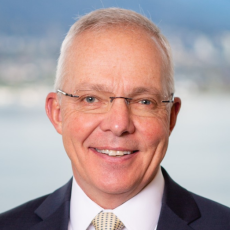Why is gold important for today’s economy?
For millennia, gold has been a storehouse of value. It has always been a scarce mineral on the Earth’s surface, produced in small quantities, and has held its value over a very long period of time. It has industrial, investment, and consumer uses—think of jewelry. Gold can be divided into the smallest units, down to a few grams. Nowadays, with electronic means, we can divide gold down to fractions of a gram. Most importantly, because it is a tangible asset, gold is an immensely durable material that can be passed down generations, unlike paper money, or even stocks—which are intangible. Although we see a big increase in cryptocurrencies today, gold will always play an important role in portfolios and hedging because it guarantees stability in the midst of risky and uncertain economic activity.
Could you give us a synopsis of Vista Gold’s operations?

Vista Gold is a developer, meaning that our strategy is to develop projects that can later be acquired by producing companies. Our core project now is Mount Todd, in Australia’s Northern Territory. This is one of the largest and most advanced development projects in that country, with 9.5 million ounces of total resource in the ground, with proven probable reserves just shy of 7 million ounces.
When built as we have designed it, it will be among the top five gold producers in Australia. Since we already have all the required environmental and operating permits for development, we are now looking to find a partner to advance this world-class gold deposit.
Why is Australia such a mining-friendly jurisdiction?
Australia’s economy is highly dependent on the export of natural resources—whether that is iron ore, coal, gold, copper, or other minerals. Whereas in the USA there are relatively few investors in the mining sector, almost every investor in Australia has some interest in it. The country has a culture of mining and therefore a history of well-established regulations, with an emphasis on environmental protection. While requiring the same rigor as in North America, they make sure that mining operations are not unduly held up by the permitting process.
How would you characterize the permitting process in Australia compared to North America?
Our experience in Australia has been both fabulous and frustrating. The period between the point we started the baseline data collection to the time we had the approved environmental statement was two and a half years, which is significantly shorter than would be required in North America. We were dealing expressly with the government of the Northern Territory, who were motivated to enhance mining operations in their jurisdiction. The bureaucracy kicked in once the federal government became involved. It took us five years to obtain federal environmental authorization.
In Australia, mining regulations are well laid out and easy to understand. Because of its reduced population density—a country roughly the size of continental USA but with only 25-30 million inhabitants—the amount of people impacted by our operations, positively and negatively, is relatively small. It is also easier to reach out to people, deliberate with them about concrete issues and thereby find a common ground. The large environmental organizations you find in other places which are solely determined to stop any mining operation do not exist in Australia. They are not NGOs, meaning that they are not funded by special interest groups, and recognize the importance of mining for the economy. Rather, environmental organizations in the Northern Territory are funded by the regional government, entailing that they act as an independent watchdog who we can work very closely with. For instance, the Amateur’s Fisherman Association of the Northern Territory is keenly interested in water quality. We sit on their board of directors, and they trust that we will keep their streams clean so that they can keep fishing.
What are you looking for in a partner?
As a result of our success in exploration, Mount Todd has become too large for us to gather the capital for the project’s development. We now estimate the costs will amount to something between $920-$950 million. The project has the capacity to generate 500.000 ounces of gold per year, which is very significant. Accordingly, its sustaining costs are below those of the top 5 gold producers in the world. So, this is the kind of project that should be the ideal acquisition for a senior partner. We are therefore seeking a partner with a strong reputation regarding environmental compliance and who will respect the hard work we have done to establish a strong relationship with the traditional owners, that is, the aboriginal people of the Northern Territory.
As Vista Gold moves forward, what would you say is your main challenge?
When inflation hit two years ago, senior gold producers delayed project assessments for six quarters and tried to increase their existing production without the risk of developing new projects. What keeps me awake at night is timing. We are confident in our work, our assets and our jurisdiction. The challenge is to act within a timeframe in which a transaction can be successful, be that a joint venture or a corporate transaction that creates value for our shareholders. While we are undertaking activities to make the project more attractive, until the pendulum swings and we see more activity oriented towards developers like us, we are in a holding pattern. Our project is shovel ready. We are dressed up for the ball waiting for somebody to ask us to dance.






